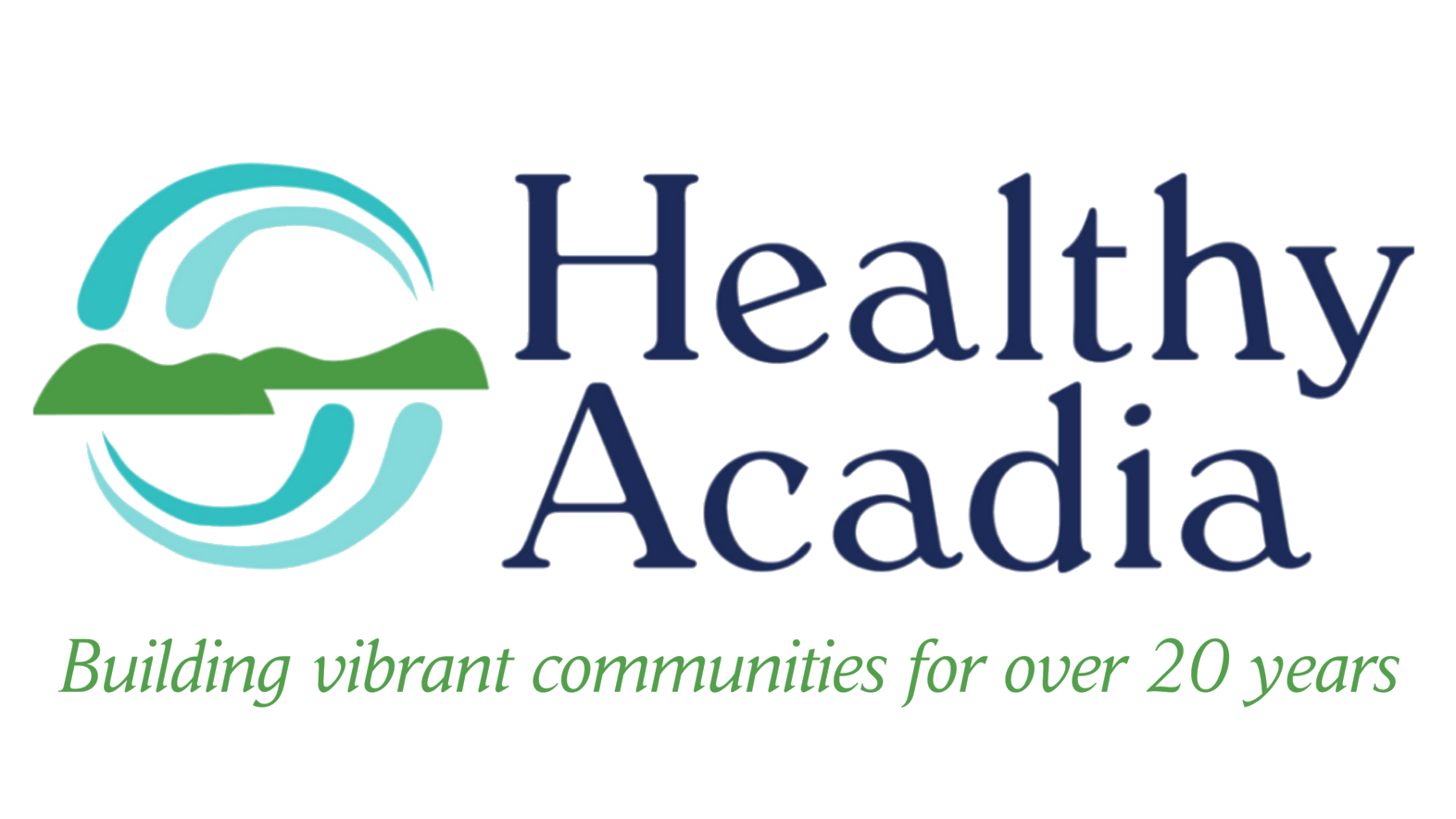Building Community Connections
Contributed by Audra Stewart-Gordon, Community Health and Communications Coordinator
Imagine if your neighborhood became a model of resilience and vibrancy, a place where everyone could truly thrive. In today’s fast-paced world, building resilient and connected communities is more important than ever. Whether you're a community leader, a local business owner, or an engaged resident, each of us plays a vital role in making this vision a reality. At Healthy Acadia, we're committed to fostering vibrant, resilient communities and addressing the root causes of social isolation.
In recent years, many communities have lost cherished gathering spots—granges, fraternal lodges, church suppers, and other hubs that once brought people together. While social media offers connection, it's not enough to combat feelings of isolation for many. Increasingly, public libraries and local nonprofits are stepping in, creating spaces for meaningful engagement and connection.
How are you connecting with your community?
We’d love to hear from you—please take a moment to complete our survey: https://forms.gle/6gvJbYzXWi5hQQgN7.
Together, we can all play a part in building more resilient communities. Below are six ways that you can get involved.
Strengthening Community Bonds
Organize Community Events Regular community events such as block parties, festivals, and social gatherings foster connections among residents. These events provide opportunities for neighbors to meet, share experiences, and build lasting relationships, enhancing the sense of community.
Establish Community Hubs Creating central locations where residents can gather for activities and meetings is crucial. Community centers, libraries, and shared outdoor spaces serve as hubs for social interaction and communal engagement.
Leverage Digital Platforms Utilize social media and neighborhood apps to keep residents informed and connected. These platforms can help organize events, share local news, and facilitate discussions about community improvements.
Enhancing Local Infrastructure
Invest in Public Spaces Well-maintained parks, playgrounds, and recreational areas are vital for community well-being. Advocate for the improvement of local infrastructure and volunteer to help maintain these spaces, making them clean, safe, and inviting.
Support Local Businesses Local businesses are the backbone of any community. Shop locally, attend their events, and promote their services. A thriving local economy contributes to a stronger, more resilient community.
Promote Sustainable Practices Encourage sustainable practices such as recycling programs, energy conservation, and green building initiatives. Sustainable living helps preserve the environment and promotes a healthier lifestyle for all residents.
Prioritizing Health and Safety
Organizing Health and Wellness Programs Health fairs, fitness classes, and mental health workshops can greatly benefit community members. Providing access to resources and information promotes healthier lifestyles and supports overall well-being.
Address Safety Concerns Work with local law enforcement and neighborhood watch programs to address safety concerns. Regular safety meetings and communication channels can help keep residents informed and involved in crime prevention efforts.
Create Support Networks Establish support networks for various needs within the community, such as senior citizens, single parents, or those facing economic challenges. Providing assistance and resources through local charities and volunteer organizations can make a significant difference.
Fostering Inclusiveness
Celebrate Cultural Diversity Organize cultural events, festivals, and holidays that reflect the diverse backgrounds of residents. Celebrating cultural richness fosters mutual respect and strengthens the sense of belonging among all community members.
Promote Inclusive Practices Ensure that community events, resources, and facilities are accessible and welcoming to everyone. Inclusive practices create an environment where all residents feel valued and supported, regardless of their background or abilities.
Engage with Local Organizations Collaborate with local nonprofits, schools, and other organizations to address community needs and promote inclusivity. Partnering with these entities can provide additional resources and amplify your efforts.
Encouraging Civic Engagement
Encourage Volunteerism Volunteering is a powerful way to contribute to community well-being. Encourage residents to get involved in local volunteer opportunities, from organizing charity drives to participating in community service projects. Volunteerism fosters a sense of purpose and accomplishment among participants.
Advocate for Local Issues Be an advocate for important local issues, whether it’s improving public transportation, addressing housing concerns, or supporting educational initiatives. Advocacy helps drive positive change and ensures that community needs are addressed effectively.
Facilitate Community Dialogues Host forums, town hall meetings, or focus groups to engage residents in discussions about community concerns and improvements. Open dialogue helps identify issues, gather feedback, and develop solutions that reflect the needs and desires of the community.
Promoting Education and Lifelong Learning
Support Local Schools Engage with local schools by volunteering, attending school events, and supporting educational programs. A strong educational system benefits the entire community and prepares the next generation for success.
Create Lifelong Learning Opportunities Offer workshops, classes, and seminars on various topics of interest to residents. Lifelong learning opportunities enrich the community and encourage personal growth and development.
Develop Mentorship Programs Establish mentorship programs that connect experienced community members with younger residents. Mentorship fosters knowledge sharing and helps build a supportive network within the community.
